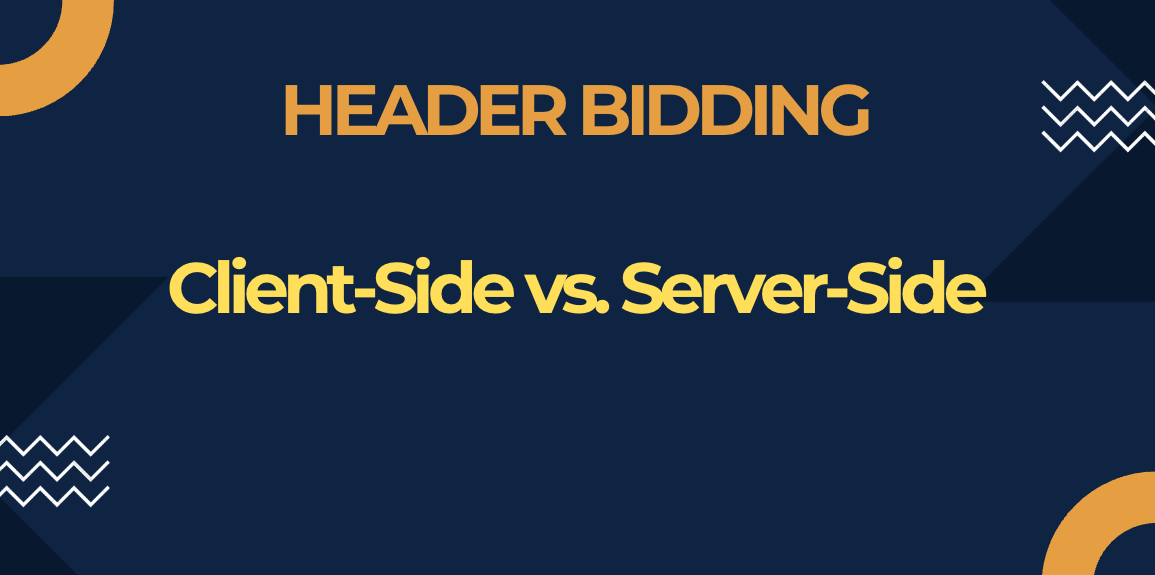Client-Side vs. Server-Side Header Bidding

Header Bidding is a revolutionary technology that allows publishers to maximize their ad revenue by simultaneously auctioning their ad inventory to multiple demand partners.
However, deciding between Client-Side and Server-Side header bidding can be a challenging task.
This comprehensive guide will help you understand the key differences between these two approaches, their advantages and disadvantages, and which one is right for you.
What is Client-Side Header Bidding?
Client-side header bidding involves placing JavaScript code directly on the publisher's web page. This code initiates real-time auctions among multiple ad exchanges and SSPs, selecting the highest bidder before the ad server is called.
How Client-Side Header Bidding Works:
- A user visits a publisher's website.
- The client-side header bidding script executes simultaneously with the page load.
- The script sends ad requests to multiple ad exchanges and SSPs.
- The exchanges and SSPs bid on the ad impression in real-time.
- The highest bidder wins the auction and their ad is displayed on the publisher's website.
Here are some of the key advantages of client-side header bidding:
- Easy to set up and implement.
- Wide range of available header bidding wrappers.
- Higher cookie match rates.
- More control over the bidding process. ️
However, client-side header bidding also has some disadvantages:
- Can slow down page load times.
- Limited scalability due to browser limitations.
- Increased complexity for publishers with many ad partners.
What is Server-Side Header Bidding?
Server-side header bidding takes place on the publisher's server before the ad request is even sent to the user's browser. This approach allows for more efficiency and scalability as it avoids the limitations of the browser environment.
How Server-Side Header Bidding Works:
- A user visits a publisher's website.
- The user's browser sends a single ad request to the publisher's server.
- The publisher's server sends this request to multiple ad exchanges and SSPs simultaneously.
- The exchanges and SSPs bid on the ad impression on the publisher's server.
- The highest bidder wins the auction and their ad tag is sent back to the publisher's server.
- The ad tag is then inserted into the user's browser and the ad is displayed.
Here are some of the key advantages of server-side header bidding:
- Faster page load times.
- Increased scalability.
- Greater flexibility for adding more ad partners.
- Improved data privacy as user data is not shared with all bidders.
However, server-side header bidding also has some disadvantages:
- More complex to set up and implement. ️
- Limited control over the bidding process. ️
- Lower cookie match rates.
- Requires integration with a server-side header bidding vendor.
Which One is Right For You?
The best approach for you depends on your individual needs and priorities. ⚖️ Here are some factors to consider:
- Your technical expertise: Client-side header bidding is easier to set up and maintain, while server-side header bidding requires more technical expertise.
- Your website traffic: If your website has high traffic, server-side header bidding can be more efficient and scalable.
- Your ad partners: If you have a large number of ad partners, server-side header bidding can offer more flexibility.
- Your data privacy concerns: If you are concerned about data privacy, server-side header bidding can offer greater protection.




